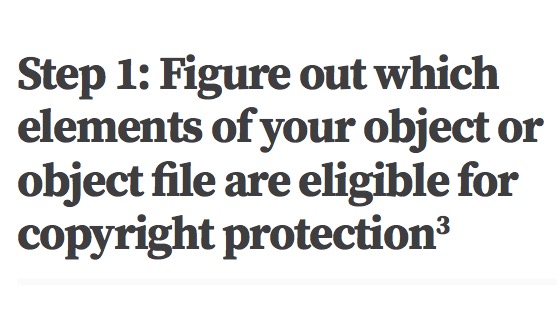While it’s now become easy for many to create 3D designs and produce 3D prints, few are aware of ways to properly license them. A new paper explains how.
A twenty-page piece by 3D printing legal expert Michael Weinberg explains “3 Steps for licensing your 3D printed stuff”. Weinberg says:
This paper aims to flesh out a copyright analysis for both physical objects and for the digital files that represent them, allowing you to really understand what parts of your 3D object you are—and are not—licensing. Understanding what you are licensing is key to choosing the right license.
The world of intellectual property licensing is complex and involves a number of different legal mechanisms, including copyright, patents, trademarks and secrets. Each mechanism applies to creations in different ways and unfortunately these regimes were developed for use prior to the advent of 3D printing, confusing the situation today.
Weinberg’s paper explains three steps to licensing:
- Figure out which elements of your object or object file are eligible for copyright protection
- Understand what copyright does—and does not—allow you to control
- Choose your license
The paper then pursues the use of copyright mechanisms, as they are available at no charge, while others, such as patent and trademark, require lawyers, fees and time. There is another angle, “trade secrets”, which is also free, but that’s not really applicable if you need to expose your creation to others.
The value of this work is a crisp explanation of how to “look” at your work in legal terms. Weinberg uses multiple examples to demonstrate the difference between legal interpretations, for example: a functional object vs. a decorative object.
After reading through this paper, you’ll have a much better understanding of what you can license and what you cannot – and how to go about doing so.


